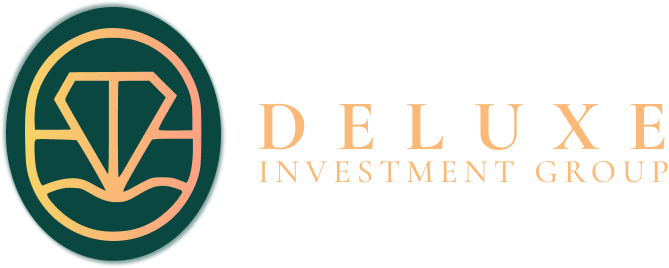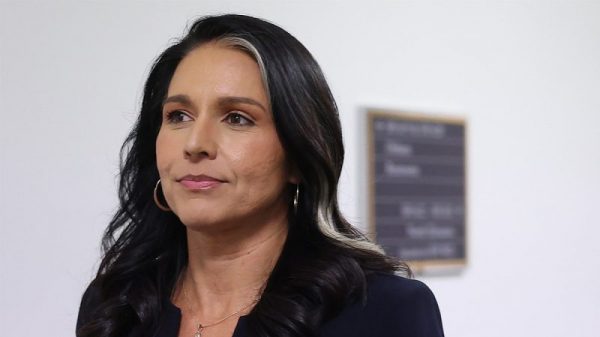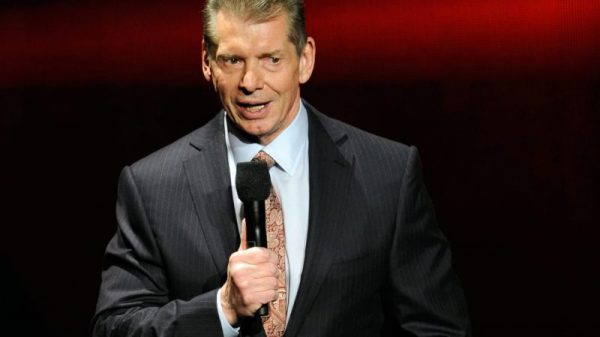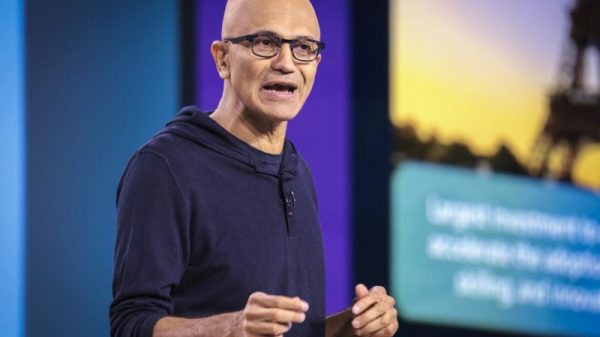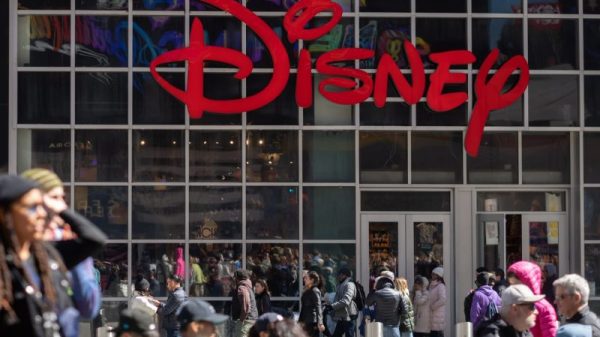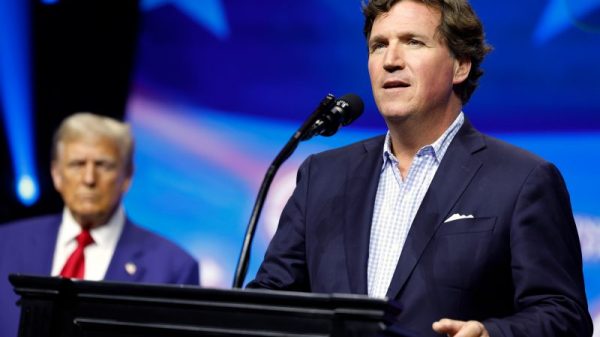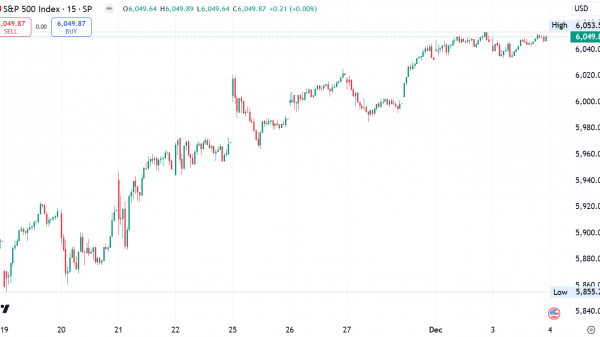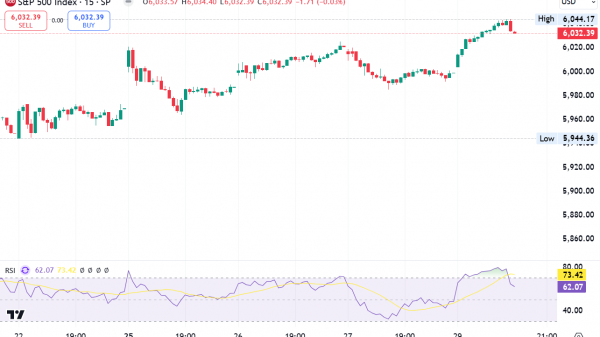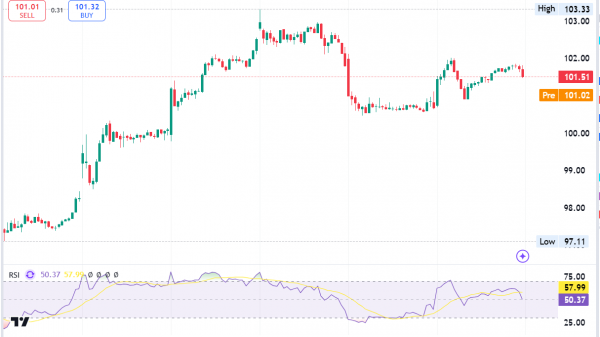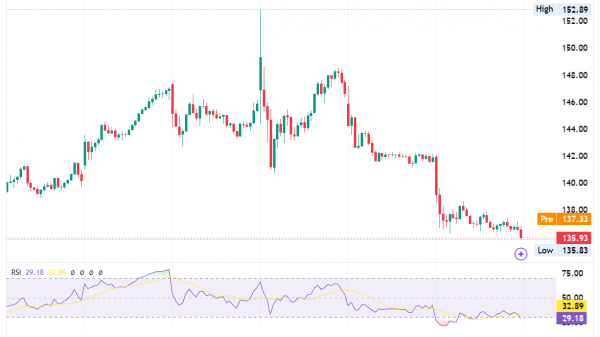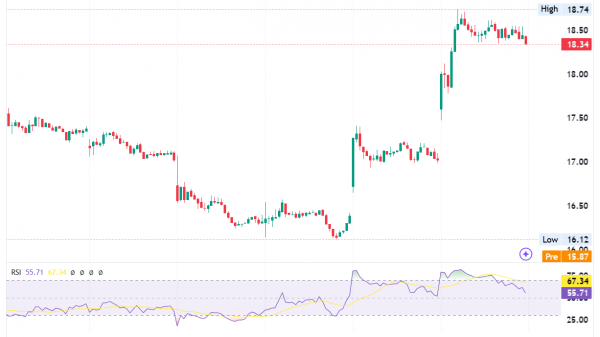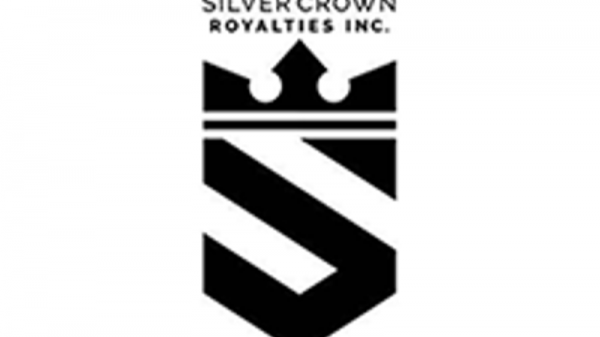US Inflation News Today: Robust Growth in Q2
The U.S. economy expanded more rapidly than anticipated in the second quarter of 2024, driven by robust consumer spending and business investment. However, today’s inflation news shows eased pressure, leading the market to maintain expectations for a Federal Reserve interest rate cut in September.
The Commerce Department’s preliminary report on Thursday showed that inventory accumulation and increased government expenditure boosted last quarter’s growth. However, the housing market’s recovery stalled, slightly hindering the economy. The expanding trade deficit also negatively impacted GDP growth.
The report alleviated concerns about a sudden end to the economic expansion. Meanwhile, weak performance in the first quarter and in April had initially sparked this sentiment.
Another notable aspect that concerns the investors is the substantial rate hikes from the U.S. central bank in 2022 and 2023. However, the U.S. economy continues to outperform its global peers. All due to a resilient labour market.
Economic growth remains stable, neither too fast nor too slow. Moreover, current inflation appears to move favourably for the Federal Reserve. Analysts are predicting a reduction in monetary restraint and an interest rate cut to appear in September.
Consumer Spending and Business Investment Fuels GDP Growth
The Commerce Department’s Bureau of Economic Analysis reported in its preliminary estimate that gross domestic product increased at an annualised rate of 2.8% last quarter, which is double the 1.4% growth rate of the first quarter, reflecting the positive impact of the inflation news today.
Economists surveyed by Reuters had predicted a GDP growth rate of 2.0%, with estimates ranging from 1.1% to 3.4%.
The first half of the year saw an average growth rate of 2.1%, which is half of the 4.2% pace recorded in the last six months of 2023. This rate slightly exceeds the 1.8% pace that U.S. central bank officials consider to be non-inflationary.
Consumer spending, which makes up over two-thirds of the economy, grew at around 2.3% after slowing to 1.5% in the January-March quarter. This increase was fueled by higher spending on services such as healthcare, housing, utilities, club memberships, sports centres, parks, theatres, museums, and gambling. Consumers also increased their spending on goods, including new light trucks, recreational goods and vehicles, furnishings, durable household equipment, and energy products.
Active Wage Gains Despite Wider Trade Deficit
Wage gains have partially fueled this spending increase. A separate Labour Department report on Thursday indicated a steady easing in the labour market. Initially, the department claims that the state unemployment rate dropped by 10,000 to a seasonally adjusted 235,000 for the week ending July 20.
Business investment increased as spending on equipment, primarily aircraft, surged at an 11.6% rate after a modest 1.6% rise in the first quarter. Spending on intellectual property products continued to grow, albeit at a slower pace than in the January-March quarter. Businesses also accumulated more inventory, with an increase at a $71.3 billion rate compared to a $28.6 billion pace in the previous quarter.
Inventories contributed 0.82 percentage points to GDP growth, recovering from being a drag for two consecutive quarters. This more than compensated for the 0.72 percentage point reduction caused by a wider trade gap.
Even excluding inventories, trade, and government spending, last quarter’s growth remained robust, with domestic demand increasing at a 2.6% rate. The rise in final sales to private domestic purchasers equalled the gain seen in the January-March quarter.
Chris Zaccarelli, chief investment officer at Independent Advisor Alliance, emphasised that the U.S. economy is far more robust than most people think. Besides, the market worries about a potential growth slowdown should be alleviated.
What Causes Inflation Slowdown? GDP Growth Signal
The GDP growth uptick suggests a potential improvement in productivity, which could slow the rise in labour costs and ultimately ease price pressures. The personal consumption expenditures (PCE) price index, excluding volatile food and energy prices, rose at a 2.9% rate after a 3.7% increase in the first quarter.
Now, the core PCE price index rise slightly exceeded economists’ expectations of 2.7%. However, the trend shows a slowdown. Core inflation increased by 2.7% from the previous year, a positive sign for policymakers before their upcoming two-day policy meeting, especially considering the inflation news today.
The Federal Reserve tracks the core PCE price index as a key inflation measure for its 2% target. Daniel Vernazza, chief international economist at UniCredit Bank, suggested that adjustments to previous monthly data might account for some discrepancies. Additionally, the broadest inflation measure, the gross domestic purchases price index, increased at a 2.3% rate, down from a 3.1% rise in the January-March quarter.
Wall Street Most Active Stocks Mixed Post-GDP Report
Wall Street displayed mixed reactions following the latest GDP report, with key indices and financial indicators reflecting uncertainty.
The S&P 500 futures fell by 0.5% on Thursday, erasing strong midday gains. This decline followed a significant 2.3% drop on Wednesday, marking the index’s steepest loss since December 2022.
The 10-year Treasury yield decreased to 4.26%, down from Wednesday’s close of 4.285%.
After Wednesday’s sharp sell-off, the S&P 500 attempted a rally but turned lower in the afternoon as investors considered the implications for the rate-cut outlook.
The underlying data could have been more alarming. Core goods prices increased at a 0.6% annualised rate after a 0.5% decline in Q1. Healthcare inflation slowed to 2.4% from 3.8%.
Housing inflation moderated to a 5% rate from 5.7%. Prices for portfolio management services, which often correlate with the S&P 500, rose at an 18% annualised rate.
Market Cuts Amid Uncertainty: Fed Rates on Hold
The Fed has maintained its benchmark overnight interest rate in the 5.25%-5.50% range for the past year, raising its policy rate by 525 basis points since 2022. Financial markets anticipate three rate cuts this year, starting in September.
Despite solid economic growth, the outlook for the year’s second half remains uncertain. The labour market is slowing, which will affect wage gains.
Although wages increased, disposable household income, adjusted for the inflation news today, grew more slowly last quarter. Currently, it is rising at a 1.0% rate after a 1.3% increase in the first quarter. This led consumers to dip into savings, reducing the saving rate to 3.5% from 3.8% in the January-March period, now well below its pre-pandemic average.
Economists also predict that the effects of many of the Fed’s rate hikes are yet to be fully felt. Slowing state and local government revenues could reduce spending, and there are concerns about potential new tariffs. These, for instance, might prompt businesses to increase imports if former President Donald Trump wins the presidential election in November. However, a recession is not expected, with monetary policy easing anticipated this year.
While the U.S. economy demonstrated strong growth in the second quarter, driven by consumer spending and business investment, uncertainty persists. The Federal Reserve’s steady interest rates and anticipated cuts reflect cautious optimism, but challenges remain.
Slowing labour market conditions, tempered wage growth, and reduced consumer savings highlight potential vulnerabilities. Despite these factors, a recession is not expected in the near term, and easing monetary policy may help stabilise the economic outlook. As the year progresses, policymakers and investors must carefully navigate these complexities.
The post US Inflation News Today: Robust Growth in Second Quarter appeared first on FinanceBrokerage.
